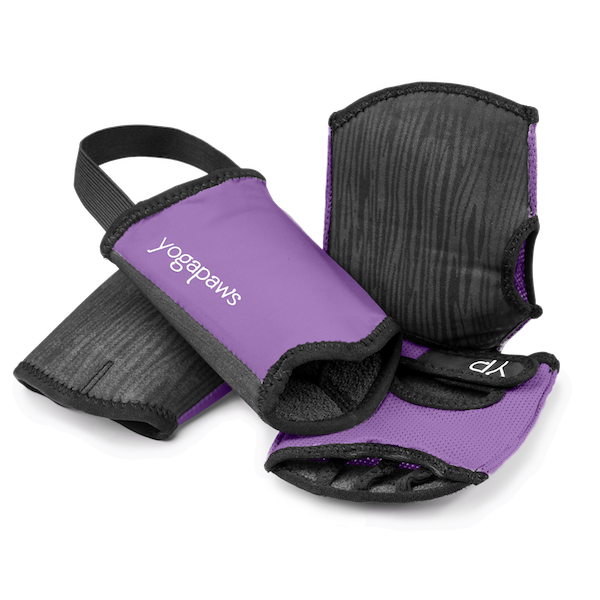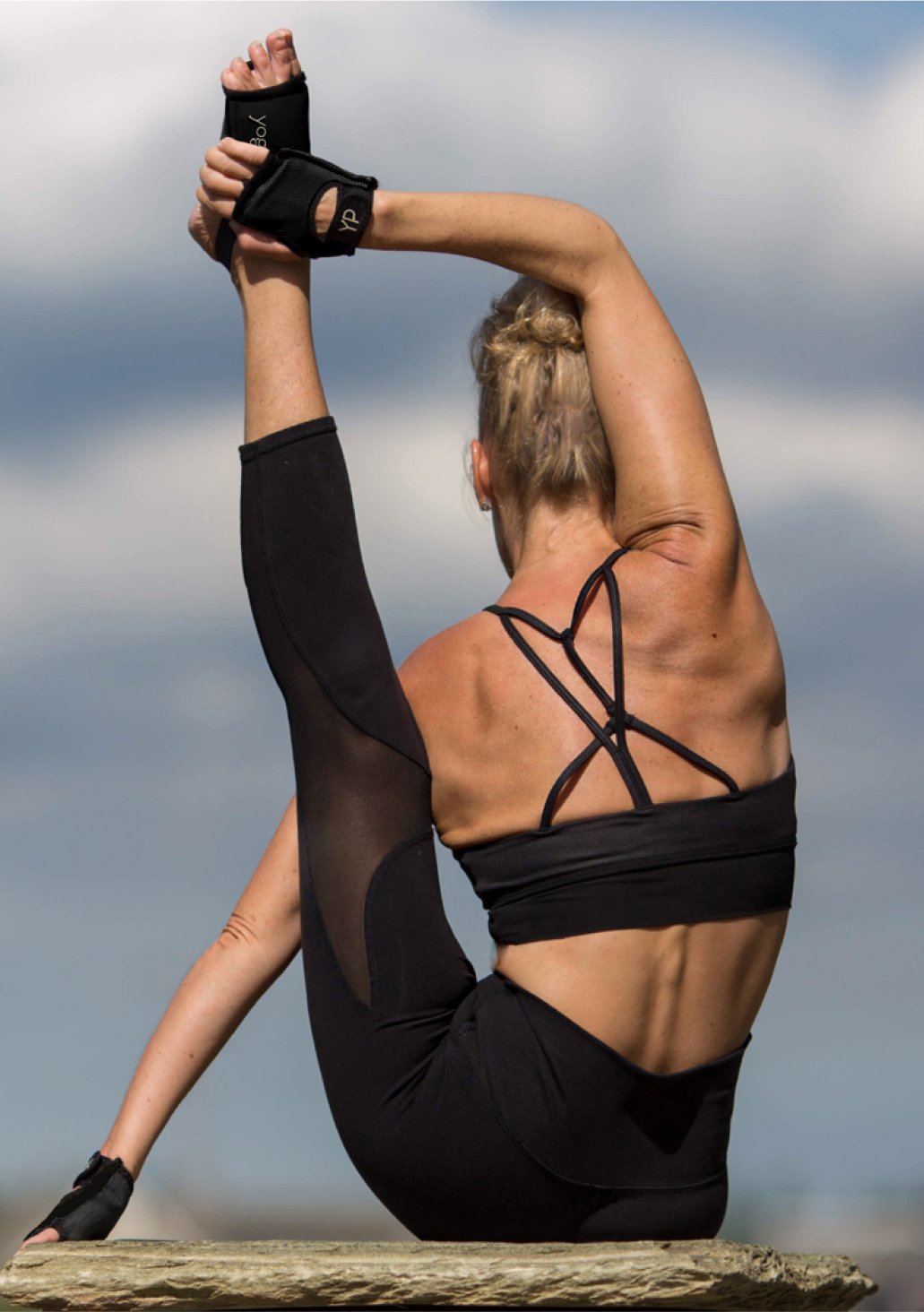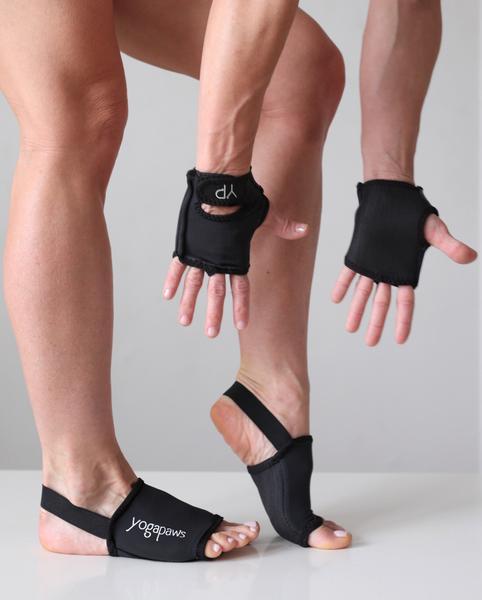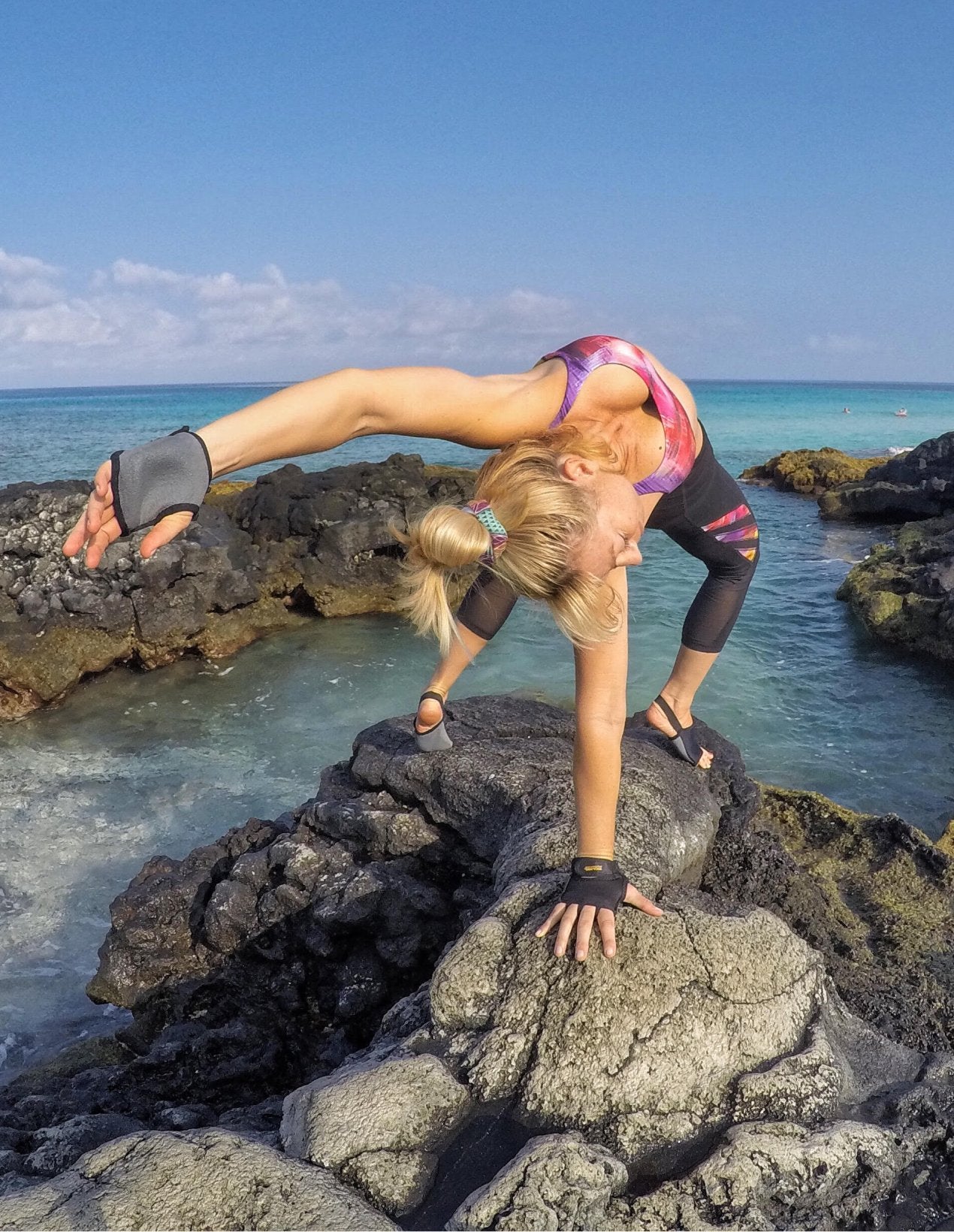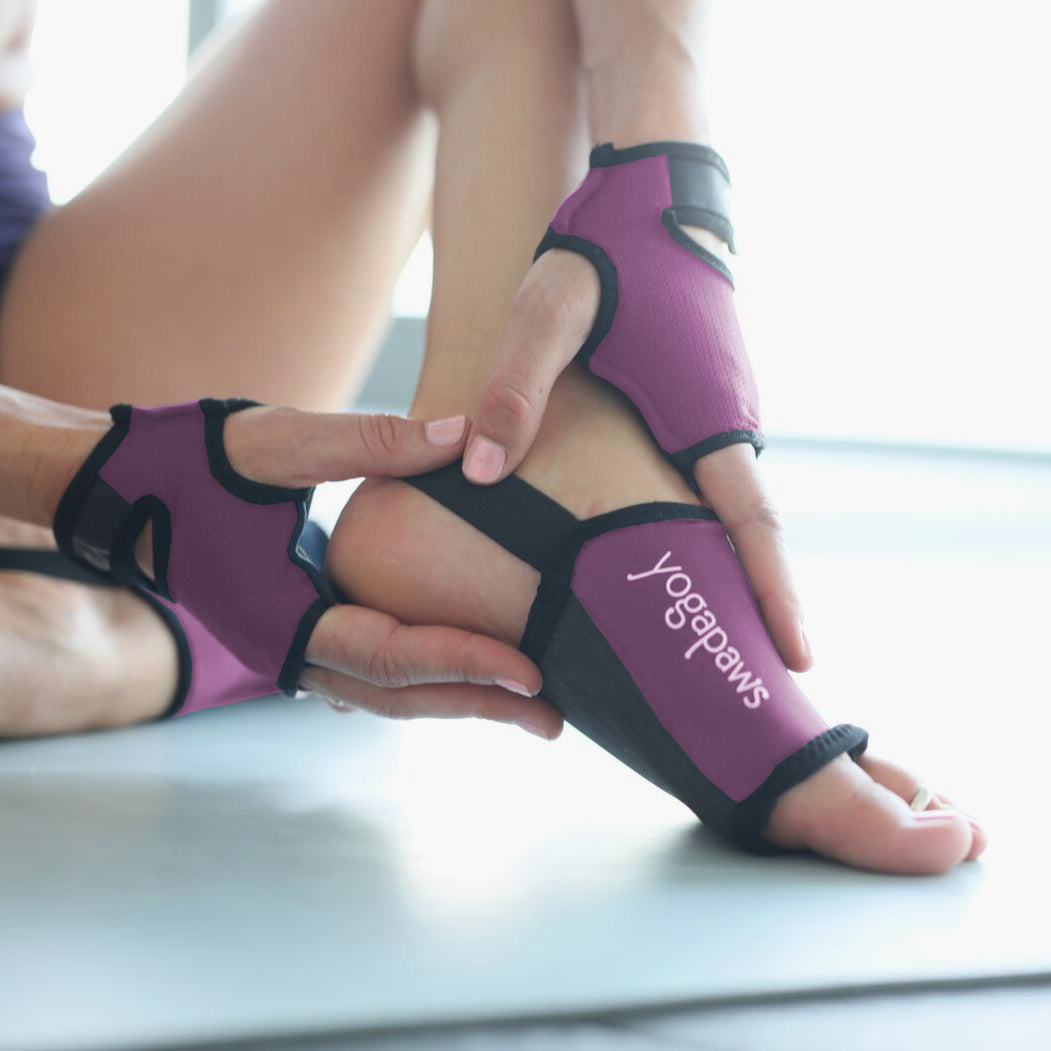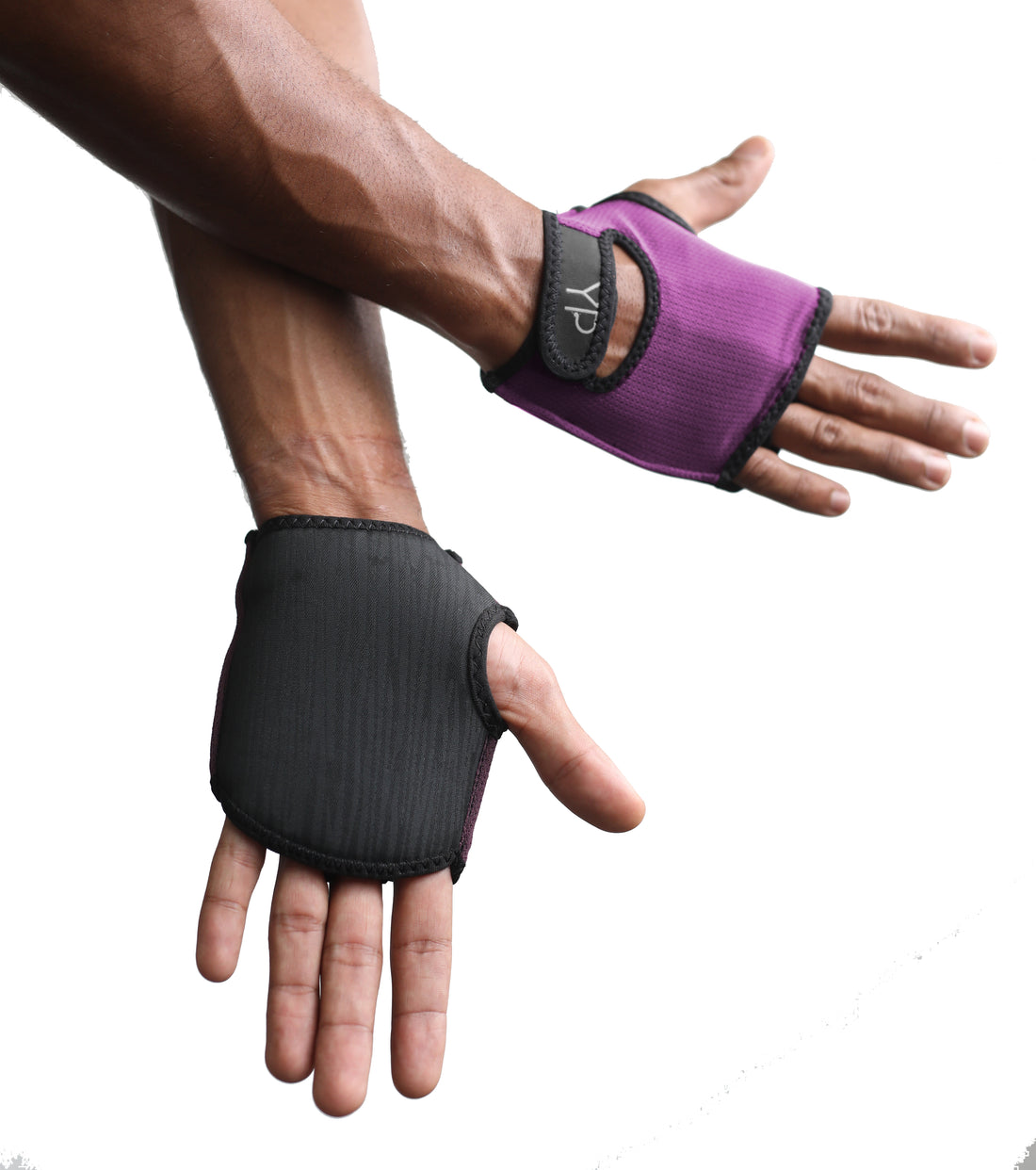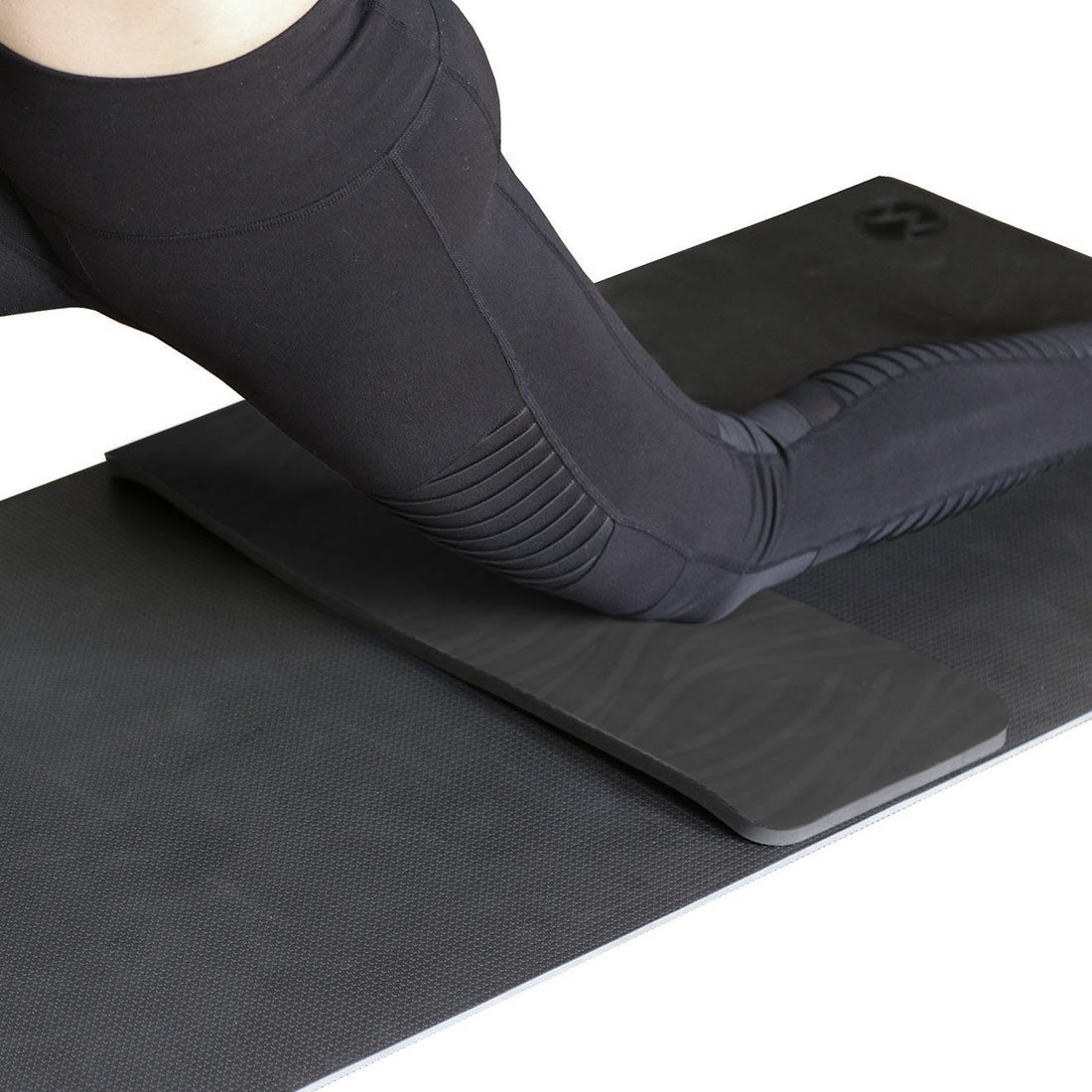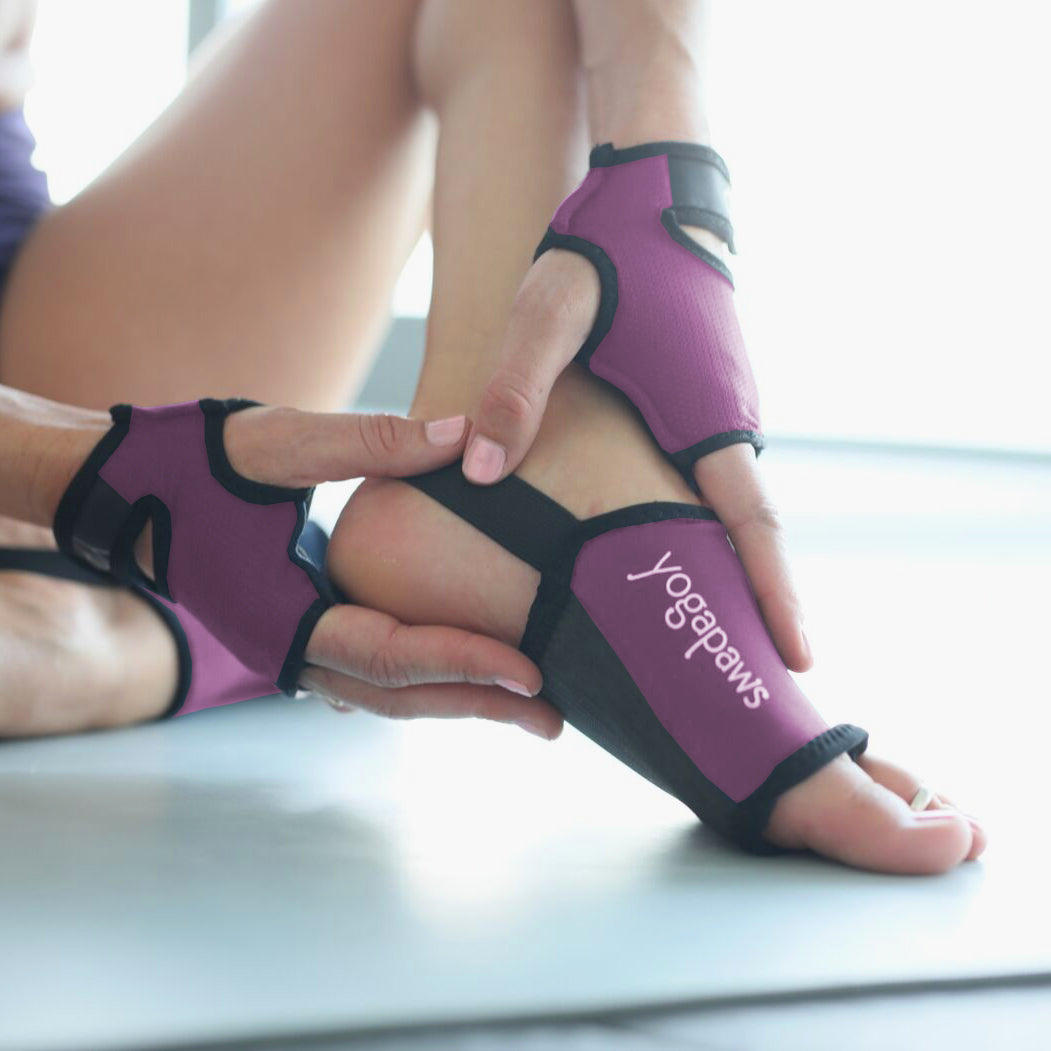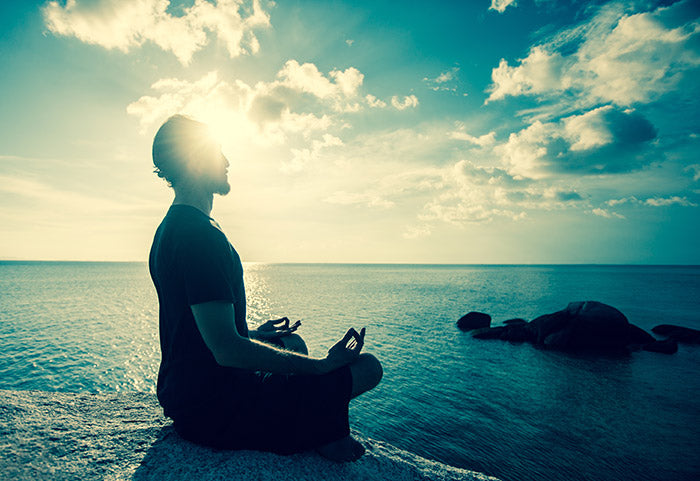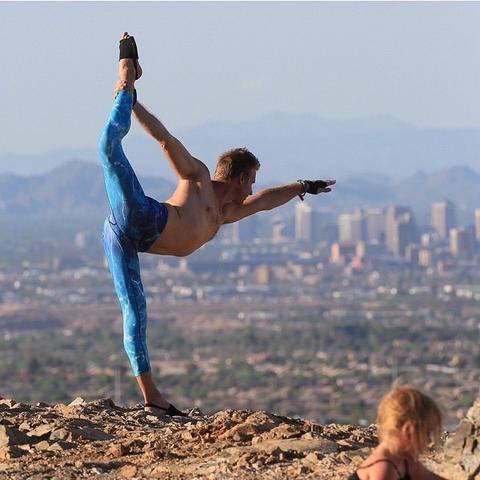When you hit the mat, chances are whatever body part you are aware of is one that’s not happy. Whether it’s a cramping hamstring or a stiff back, muscles speak eloquently about exactly how they feel.
Tendons and ligaments are more the strong, silent types. It’s easy to forget they’re even there. You can’t see most of them like you can with a major muscle group. You might not even be aware when you are training them—unless they’re injured. And, like muscles, they can take a long time to fully repair.


To start your journey toward understanding these subtler aspects of body, turn your inner vision to three points that are easier to connect with: Your Achilles tendon, which runs down the back of the lower leg and connects your calf muscle to your heel bone, and your hamstring tendon, which attaches the hamstring muscle to the tibia and fibula (just below the knee).
If you play sports or dance, you may know people with tendonitis, an inflammation of the connective tissue of the tendons. And, if you or anyone you know, has ever pulled a hamstring tendon, you know it’s not something you’d want to repeat.
Your yoga practice gives you a lot of poses that let you relax these tendons without putting too much pressure on them.
Consider trying a yin yoga class. Biff Mithoefer, the author of The Yin Yoga Kit, says holding yoga poses for extended periods while relaxing your muscles corrects the structure of the deep connective tissue. Unlike typical yoga classes, yin yoga involves easing into seated or prone yoga poses without warming up the body. In a yin class, poses are generally held between five and 20 minutes. We highly recommend trying Yin Yoga if you have not yet, it is amazing!!
Hatha classes can be beneficial. The goal is to find a practice that allows you to move slowly, especially in stretched poses. Don’t worry about keeping up with the class pace. Yoga teachers respect the need for each individual to feel the asana from within—and so will your fellow students. Hatha is a broad term that encompasses most types of yoga practice. A common denominator of most Hatha is that it will be slow, gentle, and relaxed. These are great classes for those who are starting the yoga journey.
 If you like consistency, then you will enjoy Bikram Yoga. Unlike a hot flow class, Bikram’s 26 poses move at a steadier pace, always in the same order, with the same breathing techniques, allowing tendons to warm and stretch.
If you like consistency, then you will enjoy Bikram Yoga. Unlike a hot flow class, Bikram’s 26 poses move at a steadier pace, always in the same order, with the same breathing techniques, allowing tendons to warm and stretch.
However, keep in mind that the heat is intense. The room is 105 degrees (a crowded space can feel even hotter) with 40 percent humidity. Classes are 90 minutes in duration. You will sweat, flush toxins, enjoy the class in a much different way as this class moves you more deeply into the different poses.
Whatever way you choose to practice, think about length in your body. Let your body flow into each asana—maybe bending your knees when you stretch your legs back into Adho Mukha Svanasana (Downward Facing Dog) and then rolling through the ball of your foot, instep, and heel before settling into the pose. Here are some other poses to try:
 |
Benefits: This pose stretches your Achilles' tendons. How to do it: Begin in Tadasana (Mountain Pose). Lift your arms until they are in line with your ears. Exhale and bend your knees, trying to get them close to a sitting position. Engage your core. Hold for 30 seconds to one minute, then release. |
 |
Padangusthasana (Big Toe Pose) Benefits: Yoga Journal claims, “This pose gently lengthens and strengthens even stubbornly tight hamstrings.” How to do it: Stand straight with your feet about six inches apart. Contract your thigh muscles and hinge forward from your hips. Try to move your head and torso as one unit as you bend forward. Grasp your toes with your index and middle fingers, then wrap your thumb around them. If you can’t reach your toes, Yoga Journal suggests passing a strap under you’re the balls of your feet and holding it in your hands. Think about lifting from your hips to elongate your hamstrings and flatten your back. Feel the hollowing out of your lower abdomen as your torso comes closer to your thighs. Allow your elbows to bend to the sides so that you can carefully draw your upper body to your legs. Take care not to round the back or compress the neck. |
 |
Supta Dwi Hasta Padasana (Reclining Both Hands to the Leg Pose) Benefits: forward bend, core, and lengthens hamstrings How to do it: Lay with your back on the floor. Slowly raise one leg as far as is comfortable. Using both hands, or a band, or a strap, gently pull the upright leg towards your head. |
Become conscious of your tendons as your move through your practice. Perhaps that means staying up on the ball of your supporting leg during some Warrior poses or lunges. Perhaps it means taking an extra wrist stretch in Tabletop by rotating the right fingers back to the right knee and stretching back to your heels until the palm slightly lifts from the mat (repeating on the left side).
Use visualization while you’re preparing for your practice to see the beautiful network of the tissue softening and lengthening—or repairing. The benefits will not only help you stretch your tendons but also to feel where that “edge” is for deepening your practice.


